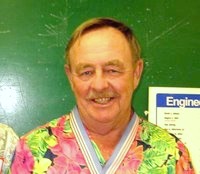A Lesson in Preservation at the Shipyard
by Captain Martin McMorrow
I recently enjoyed a seminar which focused on the recognition of historic properties and the criteria that make a structure/place significant so as to be worthy of preservation. I especially found interesting the challenges of the property owner who seeks improvement of his property while still maintaining the historical integrity of that property.
The seminar presentation used the recent Pearl Harbor Naval Shipyard Machine Shop renovation as an example of meeting this challenge successfully. Today that building looks better than ever but still maintains the character of the 1908 shipyard. A job well done and a winner of a Historic Hawaii Foundation’s Preservation Honor Award.
Reflecting on the Machine Shop, I remembered my experience with that same shop 30 years earlier. The term used then was “modernizing”.
Primarily the work was to remove and replace the sheet metal sides and roof before they completely rusted through. This too, we thought was a job well done until the Chief of Engineers came from Washington and advised our Admiral that the we were guilty of “gold plating” on the project. We in design were eager to learn what we had done wrong.
I had not been on the project but I remember driving down past the shops and couldn’t tell the Machine Shop from any of the other buildings. I asked my friend if it was the building with the blue plastic awning above the entrance door. That awning, as it turned out, was the “gold plating”. Replacing the rusted corrugated awning with a blue vinyl sheet of roofing material was enough for the Chief to decide that we here out in the far Pacific had gone rogue.
The Chief went back to DC and instructed the senior design engineers to come out with guidance to make sure nothing like the blue awning incident would ever be possible again. The result, once the bewilderment passed, was an all Navy multi-paged tome which addressed Navy tradition and some other abstract concepts but finally stated that Navy design should be “timeless”.
Now years later I see the wisdom of the Chief and take pride knowing the Pearl Harbor Naval Shipyard will always look like it did in 1908, a lot like a 1880s Hawaiian sugar mill.
Preservation is its own reward.

Captain Martin McMorrow was born in Keaukaha Hawaii. He was educated in the Hawaii Public School System and is a graduate of the University of Hawaii. He served in the US Navy during the Viet Nam War. He ended his engineering career as a design engineer with Commander Pacific Division Naval Facilities Engineering Command (COMPACDIVNAVFACENGCOM aka PacDiv). Today he brings art appreciation to a thirsty world as a docent at the Honolulu Museum of Art.
“The Captain” as he is fondly referred to, has been an active member of Historic Hawaii Foundation since 2004. He enjoys participating in HHF events, especially historical walking tours.


